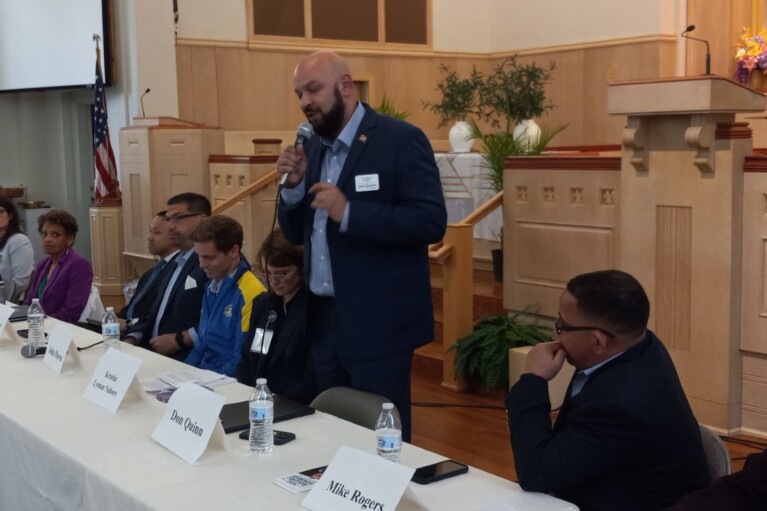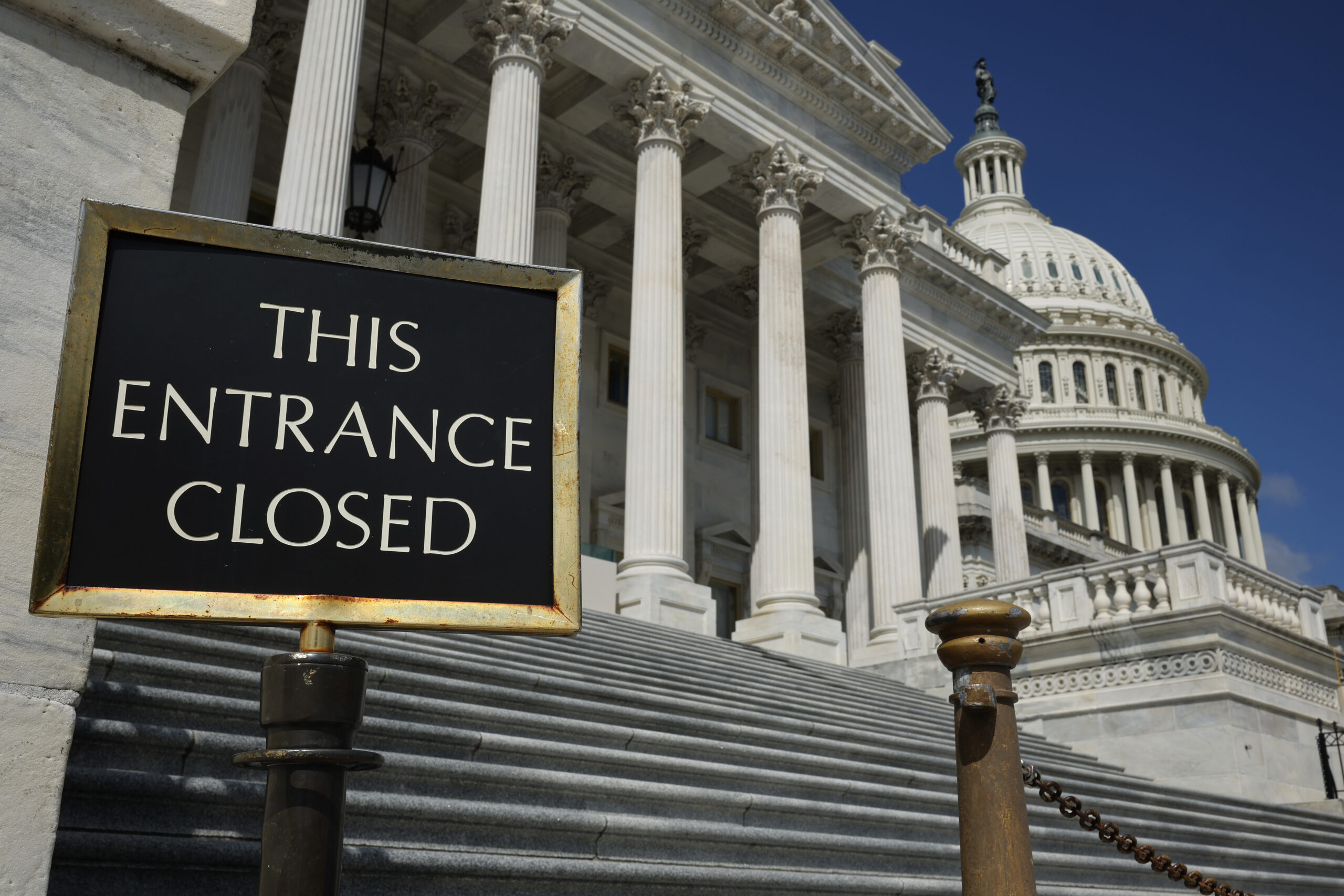As Md. Reopens, ‘Hardest Decisions are Coming,’ Health Expert Warns

A top health expert praised Maryland’s cautious approach to reopening its economy following the COVID-19 outbreak, but he said Gov. Lawrence J. Hogan Jr. (R) and his team face much tougher decisions in the weeks ahead.
The state faces particularly wrenching tradeoffs regarding how to reopen schools, he said.
Adding to the decision-making challenge are multiple unknowns, including whether the recent increase in travel and activity will produce a spike in infections, and whether people who participate in large demonstrations are at greater risk of coronavirus exposure.
Maryland has fully entered Phase 1 of its reopening — allowing limited retail, outdoor dining and selected sporting and leisure activities — and will soon move into Phase 2, Hogan announced at a news conference late Wednesday afternoon.
But the state faces tougher questions about the next phases of what the governor has dubbed the “Roadmap to Recovery,” said Thomas V. Inglesby, director of the Center for Health Security at the Johns Hopkins Bloomberg School of Public Health and a top Hogan health adviser.
Among the tough calls that lie ahead, he said: how and when to resume indoor dining, reopen theaters and other entertainment venues, allow larger gatherings, and permit K-12 and university students to return to the classroom.
“All those activities will have more risks than the things that we have so far,” Inglesby told the legislature’s COVID-19 Workgroup. “Some of the hardest decisions are coming, and I don’t think there are clear answers to those yet.”
Inglesby said the lessons learned in the hard-hit New York City area, Europe, Asia and elsewhere can help guide the state’s decision-making process.
While the incubation period for the virus is believed to be around 14 days, he told lawmakers the state won’t know for close to a month whether Phase 1 activities produce a spike in COVID-19 infection.
“To see big changes probably would take more like four-to-six weeks,” Inglesby said. “It takes time for people to develop the disease, they have an incubation period, [and] it may take them days, at least days, to be sick enough to be hospitalized.”
If people get sick in such numbers that it strains the health care system, Inglesby warned, the governor will be forced to act.
“We do need to be prepared to pause on the reopening process if things move in the wrong direction. If the hospital indicators in particular move dangerously in the wrong direction, it might be that we need even to reverse some of the decisions, if that is the only available tool that we have.”
The same concern holds true for the racial justice demonstrations that are taking place across the state. “There definitely will be a risk posed by large gatherings of people,” Inglesby said.
Most outbreaks around the globe have followed indoor events, like the religious gathering in Malaysia that brought 16,000 people to a mosque in February.
He advised wearing masks, maintaining distance from others, and to use noisemakers or drums (rather than shouting) when participating “in these important events.”
“I do think we should be prepared for the possibility of a rise in cases in the next two-to-four-to-six weeks,” Inglesby told the panel.
To continue moving forward with reopening, Maryland must sustain its testing efforts and its contact tracing program, so that infected — and potentially infected — persons can be identified, isolated and quarantined.
“This process is also called ‘case-based management’ and it is the process that has led to success in places in the world where things have been better,” he said.
Bringing children back to the classroom
Inglesby said there “there is still a big debate in the public health community” about how to reopen schools.
“Everyone agrees that it’s been terrible for children to be out of school for so many reasons — educational, support, safety. On the other hand, we haven’t had a lot of experience [in other places] with schools being open since this started.”
Given the pattern of COVID-19 exposure — with adults being more at risk than children — the biggest concern surrounds teachers, administrators, parents and grandparents who live in multi-generational households.
“Those questions haven’t really been answered by research yet,” he said.
Just this week, schools in Israel were forced to close following an outbreak.
“We’re going to have to find a way to tolerate some level of risk and balance all the good from schools with some level of risk for spread,” Inglesby said.
He said university decision-makers face the “additional problem of congregant living” — dorms, bathrooms and dining halls.
Tense questioning over test kits
The legislature’s COVID-19 Workgroup received a lengthy update on the state’s response to the pandemic from Hogan’s top health advisers, including Health Secretary Robert R. Neall, Health Department CEO Dennis R. Schrader and Deputy Secretary Fran B. Phillips.
Because of their lingering suspicions surrounding the 5,000 test kits that Maryland procured from South Korea, a purchase many lawmakers believe was over-hyped by Hogan, lawmakers pressed the trio about their use — and whether the kits are missing key components.
Most of the questioning was done by Sen. Clarence K. Lam (D-Howard), a physician.
“Something doesn’t compute,” Lam said at one point. “You have, you say, all the pieces, but we’re not testing to the degree that we really ought to.”
“If we have 500,000 tests that are in hand here in the state, and we have identified a priority for strike teams to go into nursing homes, why is it taking two months for the specimen collection kits to get out there and make it back?” he asked.
Phillips defended the state’s testing program.
“There is no shortage of test kits to distribute to the nursing homes,” she said.
“We’re not missing any component that’s necessary to operate these tests,” Phillips replied during another flurry of questions.
The briefing, scheduled to last 35 minutes, ran an hour and a half. If lawmakers were satisfied with their responses, they didn’t say so.
Phillips said the state is now benefiting from a new “signature lab” at the University of Maryland Baltimore that will continue to boost testing capacity — and that any resident who wants a screening can get one.
“We’re using [the South Korean tests] judiciously as part of a long-term strategy,” Phillips added. “Meanwhile we are maximizing our available contracts right now, for these out-of-state labs. For as long as they’re good, we’re going to use them.”




 Creative Commons Attribution
Creative Commons Attribution